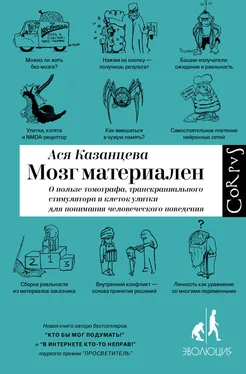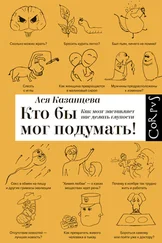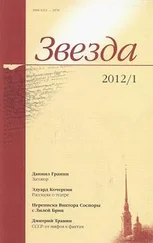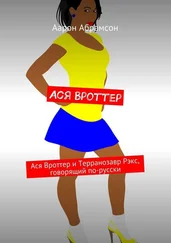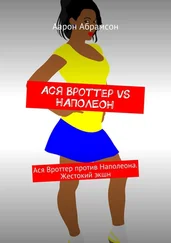Синестезия – это склонность мозга к тому, чтобы смешивать информацию разных модальностей, скажем, воспринимать цифры и буквы – или людей, как в случае C. G., – имеющими свои определенные цвета. Это не жульничество: например, если показать синестету лист, заполненный цифрами 5 вперемешку с цифрами 2, то он видит их по‐разному окрашенными и поэтому мгновенно сообщает, в какую именно фигуру складываются цифры на листе. Подробнее можно почитать в книге Вилейанура Рамачандрана “Мозг рассказывает”.
Marzullo, T. C. (2017). The missing manuscript of Dr. Jose Delgado’s radio controlled bulls. Journal of Undergraduate Neuroscience Education , 15 (2), R29 – R35.
Она проводилась в сочетании со стимуляцией таламуса, но он в основном участвует в обработке сенсорной информации и вряд ли играл ключевую роль в этом случае.
Delgado, J. M. R. (1965). Evolution of physical control of the brain . James Arthur Lecture on the Evolution of the Human Brain. New York, American Museum of Natural History.
Delgado, J. M. R. (1966). Aggressive behavior evoked by radio stimulation in monkey colonies. American Zoologist , 6, 669–681.
Delgado, J. M. R. (1963). Cerebral heterostimulation in a monkey colony. Science , 141 (3576), 161–163.
Delgado, J. M. R. (1965). Evolution of physical control of the brain . James Arthur Lecture on the Evolution of the Human Brain. New York, American Museum of Natural History.
Hariz, M. I. et al. (2010). Deep brain stimulation between 1947 and 1987: the untold story. Journal of Neurosurgery , 29 (2), E1.
Heath, R. G. (1972). Pleasure and brain activity in man. The Journal of Nervous and Mental Disease , 154 (1), 3–18.
Moan, C. E. & Heath, R. G. (1976). Septal stimulation for the initiation of heterosexual behavior in a homosexual male. In: Behavior Therapy in Psychiatric Practice , Ed. by Wolpe & Reyna, Pergamon Press Inc.
Подробности о том, как работают нейроны, будут в следующих главах, а еще в “Кратком курсе нейробиологии” в конце книги. Там много красивых длинных слов типа “Na + /K + аденозинтрифосфатаза”, и я не знаю, удобно ли вам вникать в детали прямо сейчас; если вы, скажем, едете в метро, то вряд ли. Для восприятия основного текста это полезно, но совершенно необязательно.
LeMasurier, M. & Gillespie, P. G. (2005). Hair-cell mechanotransduction and cochlear amplification. Neuron , 48 (3), 403–415.
McDermott, H. J. (2004). Music perception with cochlear implants: a review. Trends in amplification , 8 (2), 49–82.
Peterson, N. R. et al. (2010). Cochlear implants and spoken language processing abilities: review and assessment of the literature. Restorative Neurology and Neuroscience , 28 (2), 237–250.
Svirsky, M. A. et al. (2000). Language development in profoundly deaf children with cochlear implants. Psychological Science , 11 (2), 153–158.
Finn, A. P. et al. (2018). Argus II retinal prosthesis system: a review of patent selection criteria, surgical considerations, and post-operative outcomes. Clinical Ophthalmology , 12, 1089–1097.
Lewis, P. M. et al. (2015). Restoration of vision in blind individuals using bionic devices: a review with a focus on cortical visual prostheses. Brain Research , 1595, 51–73.
Hariz, M. I. et al. (2010). Deep brain stimulation between 1947 and 1987: the untold story. Journal of Neurosurgery , 29 (2), E1.
Benabid, A. L. et al. (1987). Combined (thalamotomy and stimulation) stereotactic surgery of the VIM thalamic nucleus for bilateral Parkinson disease. Proceedings of the Meeting of the American Society for Stereotactic and Functional Neurosurgery, Montreal.
Cosman, E. R. Sr. & Cosman, E. R. Jr. (2009). Radiofrequency Lesions. In: Lozano A. M., Gildenberg P. L., Tasker R. R. (eds.) Textbook of Stereotactic and Functional Neurosurgery . Springer, Berlin, Heidelberg.
Andy, O. J. (1983). Thalamic stimulation for control of movement disorders. Applied Neurophysiology , 46, 107–111.
Okun M. S. et al. (2012). Subthalamic deep brain stimulation with a constant-current device in Parkinson’s disease: an open-label randomised controlled trial. The Lancet Neurology , 11, 140–149.
Food and Drug Administration , Управление по санитарному надзору за качеством пищевых продуктов и медикаментов, – подразделение американского Минздрава, известное во всем мире своей строгостью в отношении новых процедур лечения. Когда про что‐то говорят “одобрено FDA”, это означает “признано эффективным и относительно безопасным”.
Altinay M. et al. (2015). A comprehensive review of the use of deep brain stimulation (DBS) in treatment of psychiatric and headache disorders. Headache , 55 (2), 345–50.
LeMasurier, M. & Gillespie, P. G. (2005). Hair-cell mechanotransduction and cochlear amplification. Neuron , 48 (3), 403–415.
Veliste, M. et al. (2008). Cortical control of a prosthetic arm for self-feeding. Nature , 453 (7198), 1098–101.
Wang, W. et al. (2013). An electrocorticographic brain interface in an individual with tetraplegia. PLOS One , 8 (2), e55344.
Collinger, J. L. et al. (2013). 7 degree-of-freedom neuroprosthetic control by an individual with tetraplegia. Lancet , 381 (9866), 557–564.
Woodlinger, B. et al. (2015). Ten-dimensional anthropomorphic arm control in a human brain-machine interface: difficulties, solutions and limitations. Journal of Neural Engineering , 12 (1), 016011.
Flesher, S. et al. (2016). Intracortical microstimulation of human somatosensory cortex. Science Translational Medicine , 8, 361ra141.
Читать дальше
Конец ознакомительного отрывка
Купить книгу
